 |
Geology A program within the Physical Sciences Department | ||
 |
Geology A program within the Physical Sciences Department | ||
GLG230AB, Section 14352, 2 Credits: Field Geology of the Southwest.
Pre-Summer 2011
Things to doThis course is an excellent opportunity for beginning students to become more familiar with the geology and landscapes of the Colorado Plateau of Northern Arizona and Southern Utah. There will be an informal evening meeting on Tuesday, May 10, 2011 from 7:30-9:00pm in PS 176 (GCC Main Campus) to discuss logistics and equipment needs, and to distribute background reading material. The class itself is a 10-day field expedition from Tuesday, May 17, 2011 to Thursday, May 26, 2011 to observe and interpret various geological features and phenomena. We will travel in school vans to explore the classic geology, geologic history, and fossil record preserved in this region, and the subsequent weathering processes that have shaped the area into the unique and stunning landscape we see today. There will be ample opportunities for sample collection (where permitted) and photography. A course fee of approximately $150 will cover all transportation and camping in developed campgrounds in scenic localities along the route, as well as for several lunches in the field. Other meals will be at the expense of the students in a town or commercial area near the campsite. We will be camping most nights in an improved campground- i.e. toilets and water will be available.The $150 course fee is non-refundable after May 10, 2011.Click here for Official Course Competencies. There are no prerequisites for this course, although GLG 103 is suggested.Course Information:Steve Kadel, Instructor, s.kadel@gccaz.edu Pre-Trip Meeting: Tuesday, May 10, 7:30 - 9:00pm, PS 176 Field Excursion: Tuesday, May 17 @ 7:00 am to Thursday, May 26 ~ 6:00 pm Continuing students may register according to their registration permit info beginning March 30. Open Enrollment begins April 6 GCC Registration Line 623-845-3333 Register for: GLG230AB, Section 14352, 2 credits Lab fee is not refundable after May 10, 2011.GLG 230AB Itinerary – Pre-Summer 2011 – Field Geology of the Colorado Plateau Tue., May 10 (Pre-trip meeting): Meet in GCC Science Bldg. PS-176 at 7:30 PM for overview and logistical set-up for trip. This meeting will last about 90 minutes and I will hand out itineraries, lists of what to bring on the trip, and info folders regarding geology on the trip. Students will be assigned one subject/locale to research and prepare a 5-min overview during the trip. Students can also "buddy up" for tents, etc., at that time, if you wish. Day 1 (May 17): Meet at GCC @ 7:00 am. Load up vans. Leave no later than 8:00 am. Head up I-17 toward Flagstaff. Stop at Montezuma’s well at about 9:15. Leave by 10:15 am. Restroom stop in Flagstaff at 11:00 am. Drive to Red Mtn. for lunch around 12:15. Hike out to eroded cinder cone with sandwiches to collect minerals and observe. Leave for Grand Canyon by no later than 2:15 pm. Arrive at Ten X Campground around 3:30 PM. Set up Camp. Head out to GCNP - Rim Hike/Trail of Time around 4:30 PM. Do trail of time and return to camp by no later than 6:30 PM for dinner. Day 2 (May 18): Depart from Ten X campground no later than 8:00 am. Breakfast in camp OR Tusayan grab and go/eat on road. Head east through GCNP, stopping at an overlook. Stop at monocline after exiting GCNP to observe upturned beds and ripple marks in Moenkopi Fm. Stop at Little CO River Gorge overlook. Restroom stop in Cameron. Drop down to riverbed to observe modern sedimentary structures such as mudcracks and ripple marks. Head east through Navajo Reservation – stop at Moenave to observe Dinosaur tracks. Late lunch in Tuba City. Head towards Mexican hat, UT. Stop at Elephant’s Feet for group photo. Overview of Monument Valley from north side in Utah. Valley of the Gods driving loops. Stop at Goosenecks of San Juan overlook. Head to Muley Point for dinner and campsite. Day 3 (May 19): 8:30 am - brief morning overview of local uplifts/structure (Monument uplift, etc.) via view from Muley Point. Leave Muley Pt. by 9:15 am or so. Head north to Natural Bridges. Spend 2 hrs or so there observing erosional landforms. Stop at Comb Ridge Monocline to discuss structure. Lunch in Blanding. Drive and hike to Upheaval Dome impact structure in early afternoon. Drive to Arches NP. Camp at Pack Creek Campground. Day 4 (May 20): Leave camp by 8 am. Visitor’s Center at Arches right after breakfast. Drive to Wolf Ranch point and hike to Delicate Arch viewpoint. Discuss Geology of the area. Drive to northern area of park and have lunch at Devil’s Garden trailhead Hike to landscape and double-o arches along trail. Observe erosional features and discuss processes that formed this landscape. Return to parking area and head out of park by 2:30 pm. Drive through Goblin Valley in late afternoon. Camp at Cedar Mesa. Day 5 (May 21): Head out to south towards Burr Trail. Drive through Waterpocket Fold and discuss structural uplift and erosional processes. Lunch along Burr Trail. Explore Triassic trackways in early afternoon. Arrive at Kodachrome State Park and take hike up to coal seam in cliffs above camping area. Camp at Kodachrome Basin SP, UT. Day 6 (May 22): Drive to Bryce Canyon and stop by Visitor’s Center. Drive to trailhead and hike down into Claron Formation. Discuss Tertiary Geology of region and review stratigraphy from Bottom of Grand Canyon through Claron and Brian’s Head Fms. Leave Bryce and head over to Duck Creek/Mammoth Cave lava tube. Short hike into tube and discussion of processes. Drive to Zion National Park. Dinner in Springdale. Camp at Watchman campground in Zion NP. Day 7 (May 23): Choice of day-hikes: Angel’s Landing/West Rim, The Narrows, East Rim. Explore erosional landscapes of Zion Canyon during day. Group discussion of observations and landforms in evening. Camp at Watchman campground in Zion NP. Day 8 (May 24): Leave Zion National Park and explore/collect fossils at Mt. Carmel Junction. Drive to and explore Coral Pink Sand Dunes State Park. Discussion of eolian erosion and deposition processes, including crossbedding. Wet and excavate small area of dune. Drive to Wire Pass trailhead. Hike into slot canyon and discuss formation mechanisms and flash flooding. Drive to at-large campsite along western edge of Paria Plateau and hike in to Wave area to explore erosional landforms and crossbedded sandstones. Discussion of crossbedding and tie-in to Coral Pink Sand Dunes. Camp at-large in Buckskin Gulch area, UT. Day 9 (May 25): Drive through House Rock Valley to balanced rocks at Lees Ferry. Discussion of differential erosion processes. Drive to Echo Cliffs and discuss stratigraphy of Glen Canyon Group. Do Dam tour at Glen Canyon Dam. Late lunch at Dam. Drive to Mancos Shale fossil collecting locality at Bigwater, UT. Drive to Sunset Crater National Monument and set up camp at group site. Late dinner in Flagstaff. Camp at O’Leary group site, Sunset Crater NM, AZ. Day 10 (May 26): Explore Sunset Crater National Monument. Discuss volcanic processes and landforms. Drive to Cinder Lake ORV area and observe NASA Apollo-era training site. Discuss impact cratering process and landforms. Drive to Grand Falls. Discuss weathering processes and volcano/river interactions. Late lunch in Flagstaff. Drive back to GCC – arrival mid- late afternoon between 2 and 4 PM. Tuesday, June 7 (Post-trip meeting): Meet at GCC in Physical Science Bldg. Commons area at 7:00 PM to debrief/sum up and share pictures/slides. You will have a chance to do a brief course evaluation at this meeting also. Course trip logs will be returned to the students at this meeting. |
Places to See.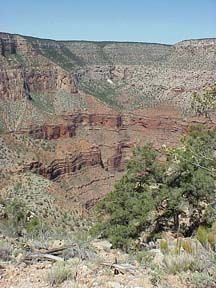 Grand
Canyon
Grand
Canyon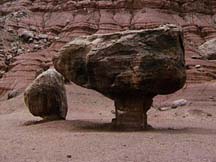 Lees
Ferry Balanced Rocks
Lees
Ferry Balanced Rocks
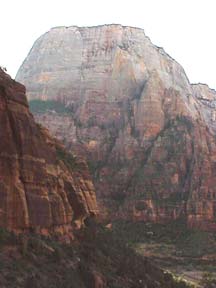 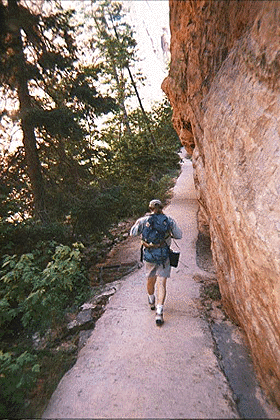 Zion
Canyon West Rim Trail
Zion
Canyon West Rim Trail
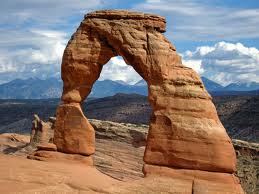 Delicate
Arch, Arches NP
Delicate
Arch, Arches NP
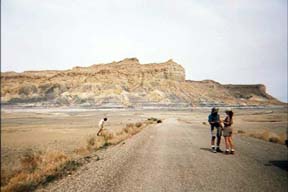 Big
Water
Fossil
Collecting
Big
Water
Fossil
Collecting
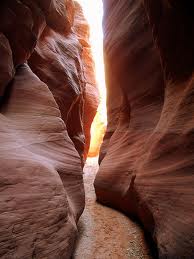
Buckskin Gulch, Paria Canyon, UT 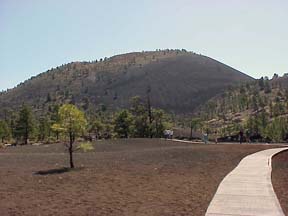 Sunset
Crater
Sunset
Crater
|
Download a slideshow of a previous GLG 230 class to the Colorado Plateau here!
Click here to watch Part 1 of the 2010 New Mexico trip called "Rock 'n Roll Geology"
Click here to watch Part 2 of the 2010 New Mexico trip called "Rock 'n Roll Geology"
Click below to see some short videos of the 2008 trip to California which we call "Fire and Ice" !Fire and Ice - Part I, Fire and Ice - Part II, Fire and Ice - Part III
| Physical Sciences Department | Geology | Astronomy | Physics | Physical Science |